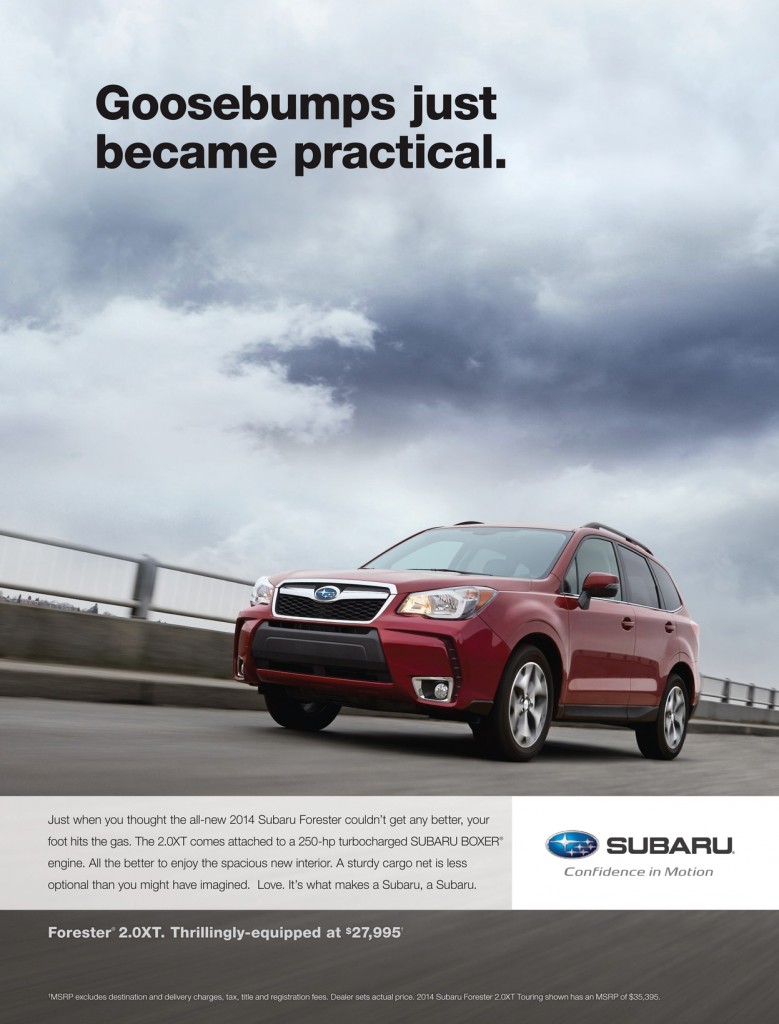I’m not convinced marketers have ever known better, but at least now “marketing bladiblaa” plagues most (though not all) businesses.
The average marketing message is: “You should buy what we sell because… well… we’re the best choice. Just take our word on it.”
Whether the marketing message promotes a computer, blender, vacation trip, or car more often than not you won’t feel compelled to act. Neither is any one marketing tactic less prone to turning to bladiblaa; websites, PPC advertising, email marketing, and networking are all equally likely to lack the impact they could have.
Even many actually good reasons to buy your products and services can turn to marketing bladiblaa and lose all persuasive power they could have if you don’t recognize the issues. And then even a great marketing strategy will fail.
The only cure to this ignorance-blessed epidemic is making your marketing efforts focus on a strong value proposition, so they’ll never again wither away uneventfully while your ideal customers pass by.
Here are five signs of marketing bladiblaa and what you should do instead. And an almost hilarious huge-budget example of what marketing bladiblaa looks like.
Do You Recognize Marketing Bladiblaa?
Any marketing effort that doesn’t have the impact of a bulldozer on the intended target audience is marketing bladiblaa.
In other words, every marketing effort you put together should move people significantly closer to buying what you sell. Otherwise, what’s the point of doing any marketing?
Your marketing messages are essentially claims. You claim to have a great, fast, stylish, advanced, durable, effective, or secure product or service. Or you make a claim about something else.
Those claims can make people decide to buy your products and services. Or if your claims are marketing bladiblaa, people won’t even notice you.
There are several possible reasons your claims don’t have the impact you wish for. Here are five of them:
1. Claims that everyone make in their marketing
If your competitors already say it in their marketing, come up with something else to say.
Repeating the same claims don’t make your products and services seem like a better choice. Instead, the repetition makes you blend into a mass of indistinguishable options.
Conversely, you will stand out as a different (and better) option when you focus your marketing on the aspects of your products that make them the best choice for your target customers—those aspects are also building blocks for a strong value proposition (example).
Thinking, “my competitors already use those aspects in their marketing” is flawed because something that makes you the best choice has to be unique to you. At least the combination of aspects you emphasize has to be unique.
Another objection I often hear is about how “Every prospect just wants [blank], so I have to focus on that in my marketing.”
For example, most hair stylists will say something like, “You’ll look good” in their marketing. And sure, that’s essentially why people hire hair stylists.
But it’s a given.
Similarly, you wouldn’t hire a marketing coach unless you expected to make more sales because of it. Still few (top) marketing coaches spend much of their marketing efforts on reminding you of that implied promise. Instead, they say something that makes them stand apart from competition.
Your marketing should make you the obvious choice for your ideal customers. Repeating what others already say puts you firmly on the same line with everyone else.
2. Claims that aren’t believable
If your ideal customers won’t believe it, don’t say it.
The weight-loss industry is filled with unbelievable claims. “Lose 10 pounds per week” and other claims that are too good to be true won’t make people take action.
Sure, if your target customers believe bloated claims, your marketing can work. (Your business will still suffer, but that’s another discussion.)
You don’t have to exaggerate to make people think you’re embellishing the truth. Just because you know something to be true doesn’t mean other people believe you.
Maybe you know that your product is superior in every way. Or maybe your fiction book is really, really good, but people don’t believe you when you tell them how great your character development is or how unexpected the plot twists are.
So, if people won’t believe it, don’t say it.
Those unbelievable claims are a close sibling to another kind of marketing bladiblaa: claims without proof.
3. Claims that have nothing to back them up
If you can’t prove it, leave it out of your marketing.
Unethical and exaggerating marketers have turned your prospects into a hostile jury you need to convince.
For example, you can be certain that your service would help schools raise their students’ average grades by 20%. But if you can’t show credible evidence to back up your claim, people won’t believe you. Or at least the doubt that’s still hanging on is enough to drive your sales attempts to the rocks.
Whatever you say in your marketing should be “intuitively true.” In other words, don’t leave prospects wondering if what you said is true or not; what you say has to just “make sense.”
Every time you force people to take a leap of faith with you they get less prone to letting you influence them.
Doubt and confusion kill sales. And if your marketing makes people feel confused or doubt what you say, it’s marketing bladiblaa.
4. Claims that don’t create a cohesive brand image
If it doesn’t fit with your brand image, think of something else to say.
I avoid talking about “brand image” because the concept is so widely misunderstood. Or rather, the concept makes people’s minds run in circles because of how vaguely they understand how you create and maintain a brand image.
But since marketing that goes against your brand image is such an interesting example of marketing bladiblaa, I couldn’t avoid it here. It’s what made Nokia’s marketing strategy weak.
So, three things you need to know about “brand image” for the purposes of this discussion:
- Brand image—to large extent—means: how people perceive you.
- You create it (or to be exact, you direct it).
- You wreck it much more easily than create it.
First, you need to get clear on how you want people to perceive you. Your value proposition basically tells you what your brand image should be, so start with that.
Second, you need to figure out how your marketing efforts will create the right brand image. In other words, understand what kind of marketing will make your ideal customers perceive you the way you want. (Again, refer to your value proposition—it is what you should get across with your marketing strategy.)
Third, do nothing that would direct your brand image away from where you want it to go. One marketing message that isn’t in line with your brand image does more harm to you than 10 perfectly aligned ones.
All that can be condensed to: “Create a strong value proposition and focus all your marketing efforts to getting it across to your ideal customers. When you do that, you’ll end up with a strong, clear brand image without you ever saying the word ‘brand’ or considering how you’ll build one for your business.”
5. Claims that don’t mesh with what the prospect is thinking
If it isn’t in your ideal customers’ minds already, figure out what is and say that instead.
In otherwise well-crafted marketing, this is the mistake that often turns even a huge budget and effort into stress, downsizing, and giving up.
Your target customers have certain thoughts, believes, and opinions about the things you mention in your marketing.
How you talk about those things has to fit in with what your ideal customers already think about them. If your marketing doesn’t mesh with their “internal discussion,” they won’t give you a say in the matter.
For example, if you sell interior design services and your ideal customers value style more than any other aspect of interior design, don’t focus your marketing on price, usability, or personality.
And if they primarily see style as “an expression of who you are,” your marketing should focus on that. Don’t say things like, “make your home look trendy,” “a cheap home makeover,” or “create a perfect flow of energy.” That said, you should say those things if your target customers identify themselves as “trendy,” “money smart,” or “energy conscious.”
You can get to all the great benefits you and your products provide—and even be controversial—once you’ve earned your place in the “internal discussion” about the topic. But always start with what people think about already.
Marketing Messages That Pack a Punch
Simply put, a truly great marketing effort takes the target customers significantly toward the next step in your marketing strategy.
The “next step” can be signing up for your email updates. Contacting you for a quote. Buying your product. Or whatever is the next step in your marketing strategy.
But what makes a marketing message accomplish that?
Your value proposition is the best reason for your target customers to take the next step toward your goals. So, when your marketing gets it across, people are as likely as possible to do what you hope.
If you don’t already have a strong, clear value proposition, it’s very difficult to do any marketing that would create good results. You’ll get lucky occasionally. But unless your goal is to “occasionally get some results,” you’re more or less stuck without a strong value proposition.
Just to give an example of what you should never try, here’s a Subaru ad that’s a great example of marketing bladiblaa:

Almost every word in this advertisement is marketing bladiblaa. I came across this ad thanks to Ryan Healey


